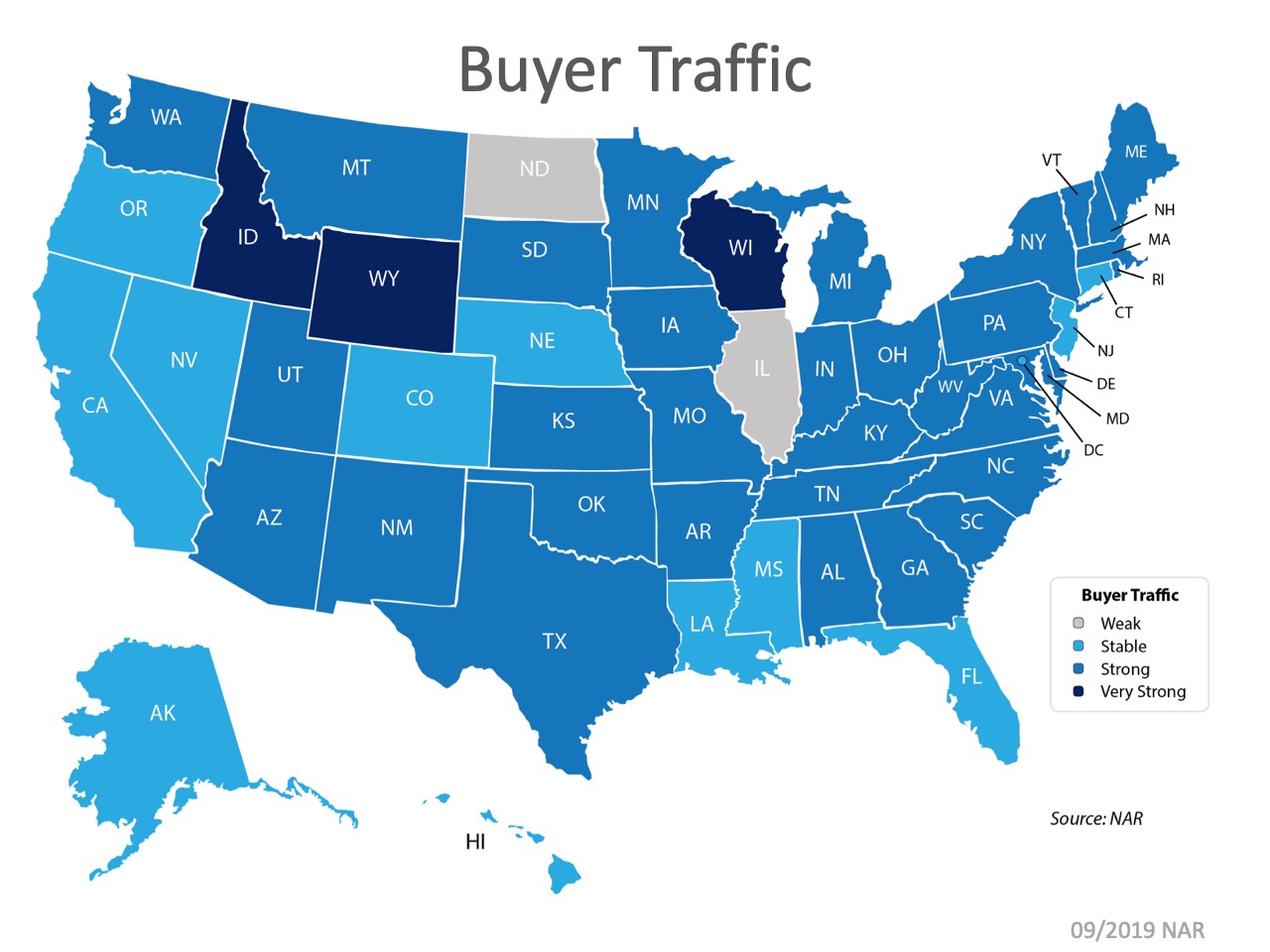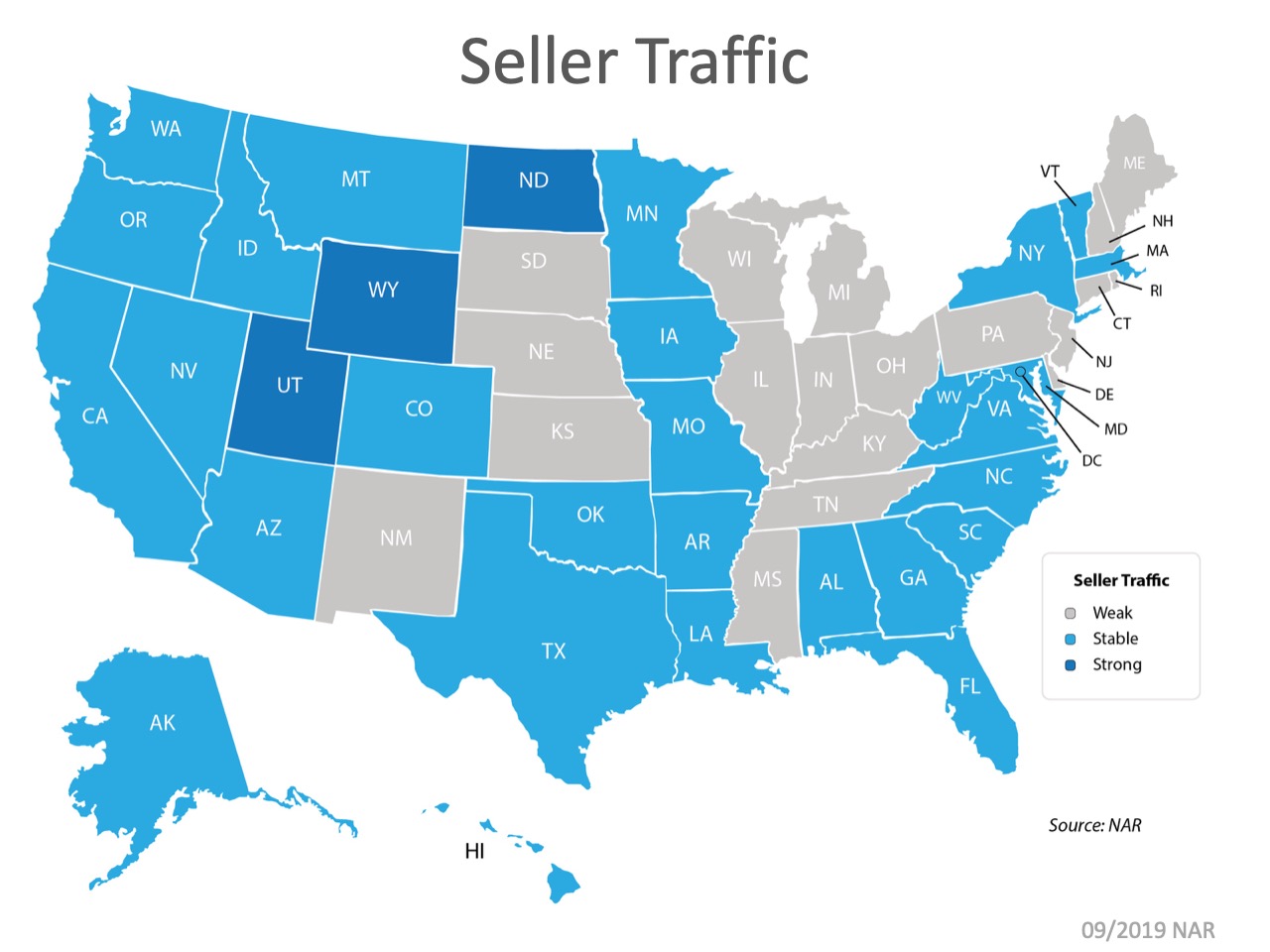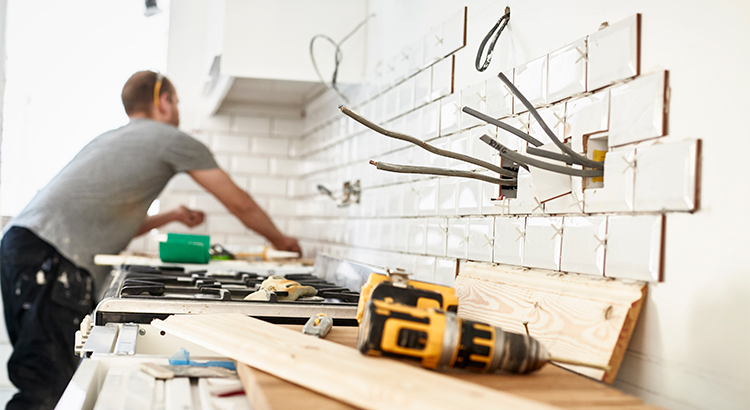The District Concert Series - Petty Theft
Come out this Friday and see The Christie Cannon Team at The Shops at Willowbend. Petty Theft a Tom Petty tribute band will be there providing tunes and fun! There are also some great places to eat and shop!

Displaying blog entries 281-290 of 589
Come out this Friday and see The Christie Cannon Team at The Shops at Willowbend. Petty Theft a Tom Petty tribute band will be there providing tunes and fun! There are also some great places to eat and shop!

By Victoria V. Valdez of The Dallas
Frisco is laying claim to a new No. 1 title.
It's the nation's top city in terms of the gap between residents' median household income and the rest of the state, according to an analysis by personal finance website GoBankingRates.
Frisco’s median household income of $120,701 is more than twice as much as Texas’ $57,051. That $63,650 difference makes it the highest among 188 U.S. cities studied.
The website called its analysis: “Most surprising cities to live in if you want to make a lot of money.” It examined cities with more than 50,000 households.
“Frisco is the best city to live in if you have your sights set on big bucks but want to avoid living in an urban center,” GoBankingRates said.
So who are Frisco’s top competitors? Just look south and east.
Neighboring cities McKinney and Plano rank second and third, respectively. McKinney’s $87,608 median household income is $30,000 more than the state’s. Plano’s difference of $31,527 is actually higher than McKinney’s, but it was dinged for being a more expensive place to live.
“McKinney ... manages to nab the No. 2 spot because it offers cheaper homes for sale and is slightly less expensive to live in compared to Plano,” according to the analysis.
Frisco's median home value is $396,500, according to real estate site Zillow.
Besides median household income, GoBankingRates examined each city’s cost of living, median home prices, labor force participation rates and state income taxes. Cost of living and median home prices were given extra weight in the ranking.
Other North Texas cities earning spots in the top 25 are Grand Prairie (7th) and Fort Worth (13th). Austin was the only other Texas city to make the list, coming in 11th.
Frisco can stack its new trophy next to one it received last year, when Money named it the best place to live in the U.S.
Morning News

The price of any item is determined by supply, as well as the market’s demand for the item. The National Association of REALTORS (NAR) surveys “over 50,000 real estate practitioners about their expectations for home sales, prices and market conditions” for their monthly REALTORS Confidence Index.
Their latest edition sheds some light on the relationship between seller traffic (supply) and buyer traffic (demand).
The map below was created after asking the question: “How would you rate buyer traffic in your area?” The darker the blue, the stronger the demand for homes is in that area. The survey shows that in 3 of the 50 U.S. states, buyer demand is now very strong; only 2 of the 50 states have a ‘weak’ demand. Overall, buyer demand is slightly lower than this time last year but remains strong.
The darker the blue, the stronger the demand for homes is in that area. The survey shows that in 3 of the 50 U.S. states, buyer demand is now very strong; only 2 of the 50 states have a ‘weak’ demand. Overall, buyer demand is slightly lower than this time last year but remains strong.
The index also asked: “How would you rate seller traffic in your area?” As the map below shows, 18 states reported ‘weak’ seller traffic, 29 states and Washington, D.C. reported ‘stable’ seller traffic, and 3 states reported ‘strong’ seller traffic. This means there are far fewer homes on the market than what is needed to satisfy the buyers who are looking for homes.
As the map below shows, 18 states reported ‘weak’ seller traffic, 29 states and Washington, D.C. reported ‘stable’ seller traffic, and 3 states reported ‘strong’ seller traffic. This means there are far fewer homes on the market than what is needed to satisfy the buyers who are looking for homes.
Looking at the maps above, it is not hard to see why prices are appreciating in many areas of the country. Until the supply of homes for sale starts to meet buyer demand, prices will continue to increase. If you are debating listing your home for sale, let’s get together to help you capitalize on the demand in our market now.

With the fall season upon us, change is in the air. For many families, children are growing up and moving out of the house, maybe leaving for college or taking a jump into the working world. Parents are finding themselves as empty nesters for the first time. The question inevitably arises: is it finally time to downsize?
If you’re pondering that thought, you may also be wondering if you should fix-up your house before you sell it, or go straight to the market as-is, allowing a potential buyer to do the updates and remodeling. If you’re one of the many homeowners this camp, here are a few tips to help you decide which way to go.
A real estate professional can help you to understand your market and the potential level of buyer interest and demand for your home. Are you in a seller’s market or a buyer’s market? This can change based on the price range of your home, too. A professional can also give you some insight on what you can change or remodel, and how to declutter your house to make it attractive to buyers in your area.
Right now, the average length of time a family stays in a home is between 9-10 years. That’s a little longer than the historical average, so if you’ve been living in your home for a while, it might be time to make some significant improvements. Think: electrical system, HVAC units, roof, siding, etc. An inspector can give you a better idea of the condition of your home, if it is up to current code standards, and recommendations on how to have your house ready before you put it on the market.
You may also be thinking about driving buyer appeal with something like a kitchen or a bathroom remodel. If so, first dig into the market value of your home, and compare it to the actual cost of the remodel. A local real estate professional can help you determine your home’s market value, and you’ll want to get a few quotes from contractors on the potential remodel pricing as well. Once you have those two factors narrowed down, you can to decide if a remodel will give you a return on your investment when you sell. Oftentimes, it is actually more advantageous to price your house to sell, list it competitively, and then let the buyer pick the colors they want for their bathroom tiles and the type of countertop they prefer. The 2019 Cost vs. Value Report in Remodeling Magazine compares the average cost for remodeling projects with the value those projects typically retain at resale.
Nationwide, inventory is low, meaning there is less than the 6-month housing supply needed for a normal market. This drives buyer demand, creating a perfect time to sell. If you’re considering selling your house, let’s get together to help you confidently determine what will be the best choice for you and your family.
All the world’s a stage, said the Bard.
That includes your house. Which is for sale. And thus needs to look bee-yoo-tee-ful.
Staging entails hiring experts with a flair for interior design. They reimagine your living space and give your house a makeover (with temporary decor and furnishings) so that it gets “oohs” and “aahs” from the buying masses.
Great staging isn’t an insurance policy — there’s no guarantee it will bring in more money when you sell your home — but it’s an important marketing tool. It presents your house in a flattering light and helps you compete at a favorable price. (In that sense, staging is like dressing your house for the price you want, and not the price you have.)
Staging also leads to eye-catching listing photos, which are especially valuable given that most home buyers begin their search by scrolling through listings online.
So, are you thinking about hiring stagers for your home? Here’s what to consider.
But you don’t have to take our word for it. A recent survey from the NATIONAL ASSOCIATION OF REALTORS® revealed that:
Many listings agents offer staging services to clients as part of their services. If you want to use someone you find yourself, you typically will have to pay out of pocket.
Staging costs vary depending on where you live and how many rooms you’re staging. On average, home sellers pay between $302 and $1,358 for staging, according to HomeAdvisor.com. If your house is empty because you’ve already moved, you might also have additional expenses for renting furniture and other homey decorations to make it look lived-in.
Many stagers offer consultations for as low as $150, Fixr.com reports. Using the advice you learn during the consultation to try DIY staging may be your best option if you’re on a tight budget. Listen for tips on how to use the furniture and decor you already have to show off your home’s best assets.
Related Topic: Sell a Home: Step-by-Step
Spoiler alert: No buyer wants to walk into a messy house.
So, take time to clean and declutter your home. Organize everyday household items into crates and keep them out of sight. Stow away seasonal decorations (that means no Christmas in July). Make time for — or invest in — a whole-house cleaning, including carpet shampooing. Change lightbulbs, finally make those minor repairs, and add a fresh coat of paint to any room that needs it. Clean out closet spaced- because buyers will want to check out the closets.
Also worth considering? Removing personal items from view, such as copious family photos, artwork, or religious keepsakes. The concern is not that home buyers will be offended by you or your lifestyle. The goal is to neutralize the space and help home buyers imagine themselves living there. (But don’t go overboard. You don’t want rooms to feel sterile, either.)
Yes, we did just tell you to clean out your closets. So where are you supposed to put all this stuff? If you don’t have a discrete place to tuck things away, consider renting a storage unit.
If your agent doesn’t offer staging services, he or she can likely recommend local stagers for you to work with. Before you hire a stager, it’s best to interview at least three candidates in person. You’ll want to get a sense of how much they charge — and whether they have good taste.
To do your due diligence, here are 10 questions to ask prospective stagers:
You don’t have to stage your whole house to make buyers swoon.
Staging the rooms where people tend to spend the most time usually makes the biggest impression on buyers. Start with thefollowed by the master bedroom and the kitchen.
Keep in mind that you’re not going for an HGTV-worthy overhaul: Even small touches, like putting fluffy towels in the bathroom or replacing shabby throw pillows in the family room, can make your home that much more attractive.
Your house has to look its best — inside and outside. After all, buyers form their first impression when they pull up in front of your home. It’s no surprise, then, that curb appeal — how your home looks from the exterior — can increase your home’s sales value up to 17%, a Texas Tech University study found.
If you’ve never had your yard professionally landscaped, now may be the time to do it. Landscaped homes have a sales price advantage ranging from 5.5% to 12.7%, according to research by Alex Niemiera, a horticulturist at Virginia Tech. That would mean an extra $16,500 to $38,100 in value on a $300,000 home.
Professional landscaping, however, can cost a lot. You’re aiming for polish, not a new garden of Versailles. If budget is a concern, start with these DIY improvements:
Then move on to these easy upgrades to your home’s exterior:
Even basic upgrades — like laying fresh mulch, changing porch lights, or installing a new mailbox — can help a buyer fall in love at first sight.
Just wait ’til they come inside and see what else you’ve done with the place.
In every area of the country, homes that are priced at the top 25% of the price range for that area are considered to be Premium Homes. In today’s real estate market there are deals to be had at the higher end! This is great news for homeowners who want to upgrade from their current house and move-up to a premium home.
Much of the demand for housing over the past couple years has come from first-time buyers looking for their starter home, which means that many of the more expensive homes that have been listed for sale have not seen as much interest.
This mismatch in demand and inventory has created a Buyer’s Market in the luxury and premium home markets according to the ILHM’s latest Luxury Report. For the purpose of the report, a luxury home is defined as one that costs $1 million or more.
“A Buyer’s Market indicates that buyers have greater control over the price point. This market type is demonstrated by a substantial number of homes on the market and few sales, suggesting demand for residential properties is slow for that market and/or price point.”
The authors of the report were quick to point out that the current conditions at the higher end of the market are no cause for concern,
“While luxury homes may take longer to sell than in previous years, the slower pace, increased inventory levels and larger differences between list and sold prices, represent a normalization of the market, not a downturn.”
Luxury can mean different things to different people. It could mean a secluded home with a ton of property for privacy to one person, or a penthouse in the center of it all for someone else. Knowing what characteristics you are looking for in a premium home and what luxury means to you will help your agent find your dream home.
If you are debating upgrading your current house to a premium or luxury home, now is the time!

The Housing Market has been a hot-topic in the news lately. Depending on which media outlet you watch, it can start to be a bit confusing to understand what’s really going on with interest rates and home prices!
The best way to show what’s really going on in today’s real estate market is to go straight to the data! We put together the following three graphs along with a quote from Chief Economists that have their finger on the pulse of what each graph illustrates.
“The real estate market is thawing in response to the sustained decline in mortgage rates and rebound in consumer confidence – two of the most important drivers of home sales. Rising sales demand coupled with more inventory than previous spring seasons suggests that the housing market is in the early stages of regaining momentum.” - Sam Khater, Chief Economist at Freddie Mac

"A powerful combination of lower mortgage rates, more inventory, rising income and higher consumer confidence is driving the sales rebound." - Lawrence Yun, Chief Economist at NAR

“Price growth has been too strong for several years, fueled in part by abnormally low interest rates. A mild deceleration in home sales and Home Price Index growth is actually healthy, because it will calm excessive price growth — which has pushed many markets, particularly in the West, into overvalued territory.” – Ralph DeFranco, Global Chief Economist at Arch Capital Services Inc.

These three graphs indicate good news for the spring housing market! Interest rates are low, income is rising, and home prices have experienced mild deceleration over the last 9 months. If you are considering buying a home or selling your house, let’s get together to chat about our market!
Displaying blog entries 281-290 of 589

